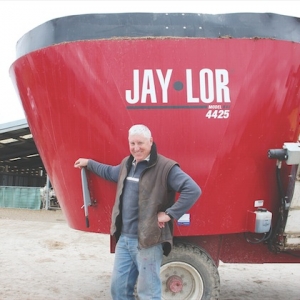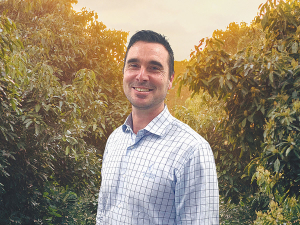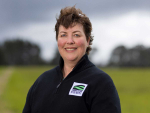A JAYLOR feed mixer wagon is providing ‘room service’ for 700 Saanen in-milk goats living in a goat ‘motel’ on 52ha at Waharoa, Waikato.
Geoff Hicks owns the farm and runs it with sharemilker Sean Baty. Hicks switched from drystock farming to dairy goats about 20 years ago.
“The goats were outside but they do much better indoors. They don’t have worm problems, which they’re susceptible to outdoors, and they don’t like getting cold. They’re happy now and production has increased.”
They used to mow grass every day and bring it to the goats but now they’ve gone one step better. They ensile all the grass and combine it with other feeds to prepare mixed rations.
In May, Hicks bought a Jaylor 4425 mixer wagon. He and Baty looked at other brands but preferred the Jaylor. “It was quicker than the others we trialled and made a better mix. We talked to a dairy farmer who lives nearby who’d had one for years. He hadn’t had any problems and was getting another.
“The Jaylor is robust and simple…. It has a single auger with a heavy-duty gearbox. It’s not going to create trouble long term. We’ve ended up with a much better machine at a great price.”
He says the Jaylor is also manoeuvrable, which speeds up feeding in an enclosed area. “It has a short trailer and turns corners easily. Compared to others it’s a much smaller wagon for the same capacity.”
The machine had one issue that had to be addressed. “With goats we need a long skinny feed row rather than the bulky row you have for cows. I liked the Jaylor’s mixing, but didn’t like how it fed out.”
Hicks brought this to the attention of Power Farming Morrinsville. They came back with a modification that produced the feed flow the operation required.
Baty fills it in the evenings and feeds out three times during the day. It takes 13.9m3 and he uses a tractor with grabs to add two bales of grass baleage, one bale of lucerne and two tonnes of maize. Then he switches it on.
Canola meal, minerals and 1500kg of grass silage from the pit are added to the mix. The Jaylor 4425 has built-in scales to tell them when they have the right amount. It takes 10 minutes to mix and then it is fed out. “The goats love it,” Baty says.
He has only blocked it once, when he put a bale at the back. “That was my fault and since then I put all the bales at the front.”
Baty uses a 140hp tractor to pull the wagon, but reckons 100hp would be plenty.
“We used to mow every day and bring the goats fresh grass but now we put everything in the pit or bales. Hopefully it’s an advantage as we don’t get any variance,” Hicks explains.
“When you’re cutting every day the weather determines what you’re feeding. It may be dripping wet or it may be wilted. Now we don’t get that variance. The silage pit gives a consistent product and we can cut baleage when the conditions are right.”
Tel. 07 902 2200 www.powerfarming.co.nz



















